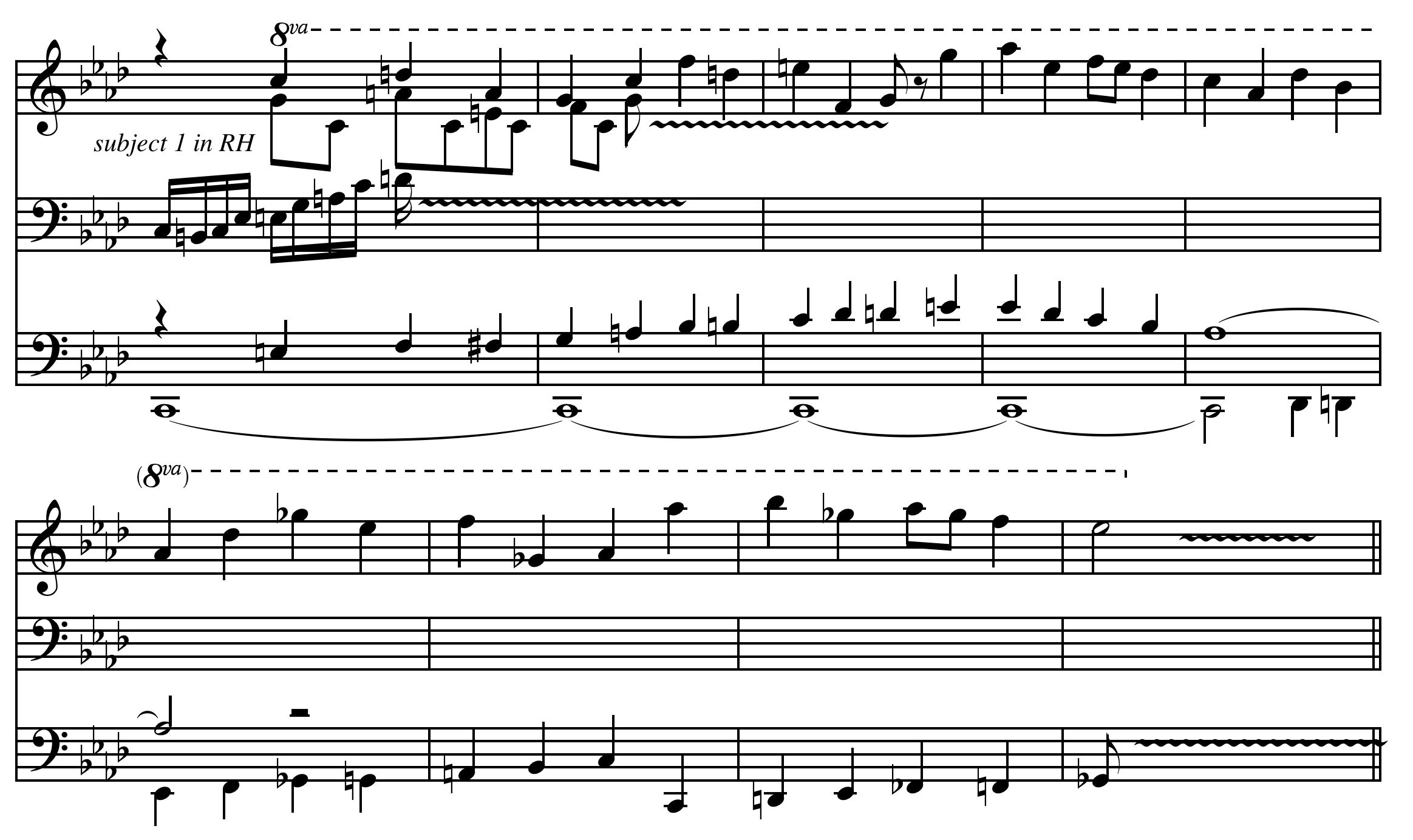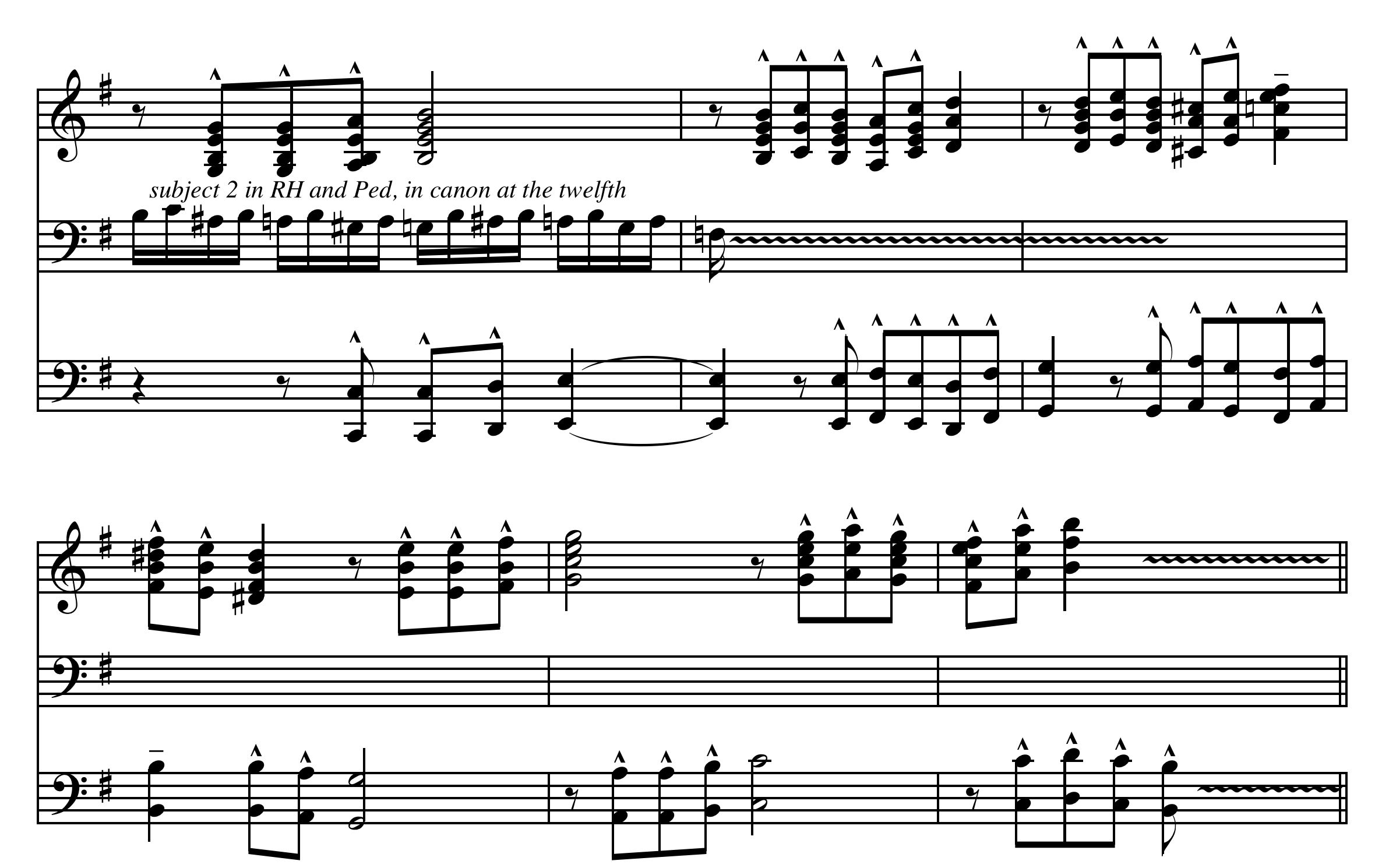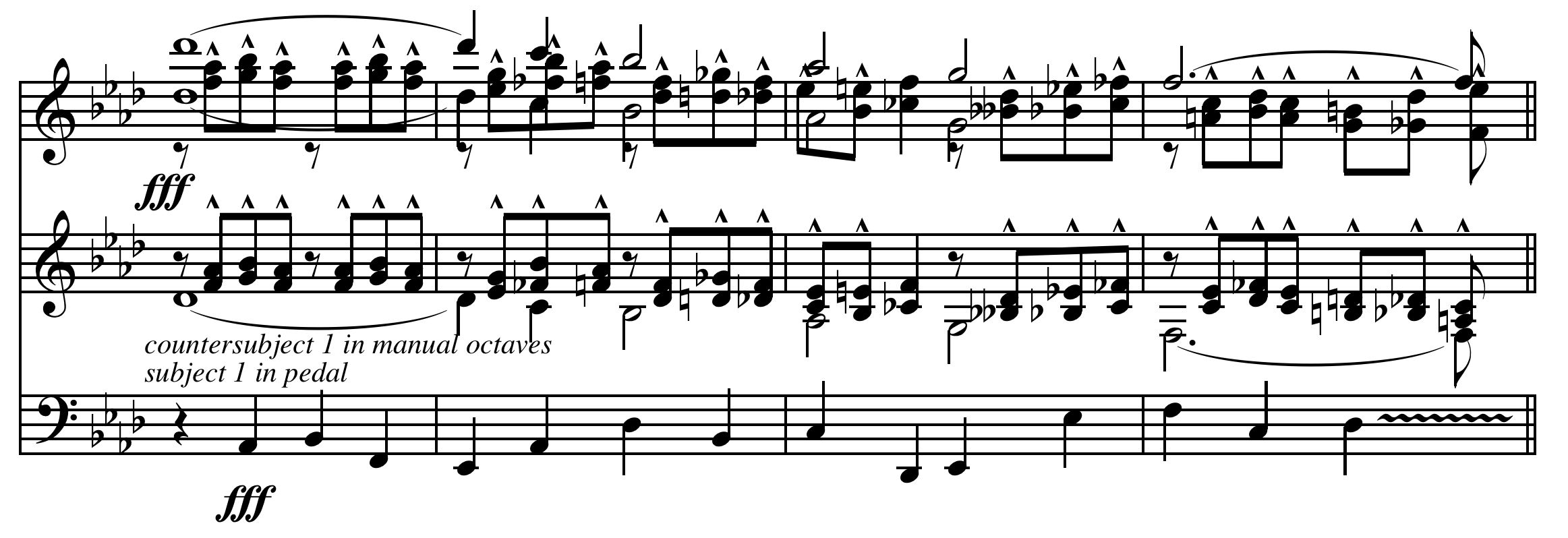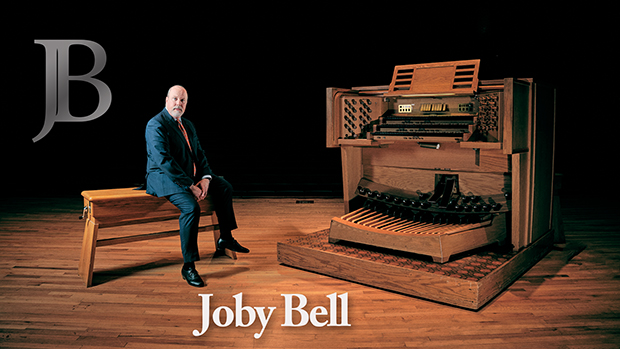Greetings from hot, humid Houston, the city of my greatest period of growth as a musician, 1990-2004. I miss it here.
Currently (June 2016), I’m attending the national convention of the American Guild of Organists, during which I’m also playing a recital. Program book limitations prohibited lengthy program notes, but space here on my website is unlimited! The following program notes are provided for attendees' use during the recital and otherwise for the enjoyment of faithful jobybelldotorg readers:
*****************************************
Final, from Six Pièces
César Franck (1822-1890)
A description of Franck’s twelve works for organ solo might include phrases such as ‘harmonically rich,’ ‘serious,’ and ‘grand forms.’ The exception might be the Final, arguably the least complex and most ebullient of the twelve.
The Final makes a fairly traditional excursion through sonata-allegro form. The energetic main theme holds the entire work together with frequent appearances and fanfares:

The piece maintains its lively tempo in the background even while the lyrical second theme is holding forth with its longer note values:

There is a third motive melodically related to the main theme but more often used as a rhythmic undergirding or “glue:”

***********************************************************
Partita on “Comfort, comfort ye my people”
Georg Böhm (1661-1733)
Although usually included among the dramatic “third-generation” North Germans, Böhm exhibits substantial French and Italian influence in his writing, with heavy ornamentation and somewhat reserved changes of texture within a piece. As a result, despite their obvious church connections, his chorale partitas seem intended for – or at least better suited to – the harpsichord. The present partita of twelve variants on “Comfort, comfort ye my people” is full of rapid-fire ornaments and considerable filigree work. The twelfth and final variant is sometimes omitted in performance: it is the only one using pedal, and its relative placidness might appear a bit of an afterthought to the grandeur of the eleventh variant. For this performance we will hear all twelve partitas, framed at the beginning and end by J. S. Bach’s harmonization of the chorale. The melody:

**************************************************
The Moonpiper
Ivan Božičević (b. 1961)
Most recitals during an AGO convention include a world premiere. I have the honor of premiering The Moonpiper, the winner of the 2016 AGO/Marilyn Mason Award in Organ Composition, composed by Ivan Božičević of Croatia. The Moonpiper is inspired by the sound of bagpipes and of an irresistible invitation to dance, all within a general minimalistic style. The composer says:
“Bagpipe imitation has a long tradition in Western keyboard music ... [T]he [early] Pastorale was one of my starting points. Another of my interests is the bagpipe folk music of the Balkans, which features livelier dance rhythms than its Western counterparts: 9/8, 11/8, 13/8, or even more complicated uneven meters are common. Although I have used neither rhythmic nor melodic formulas that stem from actual folk music, I hope that the spirit of the country piper summoning everybody out to dance the night away is demonstrably present in my piece ... Listeners will hear the tradition of the 19th-century keyboard toccata with 16th-note perpetuum-mobile. Additionally, there is the contemporary reductionist/minimalist procedure: the whole piece unfolds itself using only one short motif (7/16) and its variation (7/16 + 5/16). The two motifs vary throughout the piece with subtle changes of harmony, mood, and color … The challenge is solid articulation and dance-like rhythmic suppleness of constant 16th-note motion in a fast tempo.”
Here are the rhythmic and melodic "germs" from which the entire piece is built:

***********************************************************
Prelude and Fugue in A-flat, Op. 36, No. 2
Marcel Dupré (1886-1971)
One might call the typical prelude and fugue ‘well written,’ ‘structured,’ ‘severe,’ or ‘clever.’ But how often do you get to call it ‘beautiful?’ Dupré’s music often bespeaks a certain dark quality of the high Gothic architecture of Parisian churches and instruments in which much of it was conceived. But in the A-flat Prelude and Fugue, after a fairly dark prelude we are treated to one of the loveliest fugue subjects this organist has ever heard, finished off by a rapturous conclusion. Dupré develops the same musical themes in both prelude and fugue.
Fugue subject 1:

Countersubject 1:

Fugue subject 2:

Countersubject 2:

The Prelude is surprisingly contrapuntal, though without relinquishing its status as a true prelude to what follows it. Treatment of the subjects in the Prelude include:
 //
//

//

//

The masterful double fugue follows all the “rules” by working out the two subjects and their attending counter-subjects in turn, then combining all these in several heavy stretto sections. This extraordinary piece is clearly an artistic nod to the genius of Bach, while remaining genuinely beautiful music.
 Friday, November 4, 2016 at 9:33PM
Friday, November 4, 2016 at 9:33PM 












